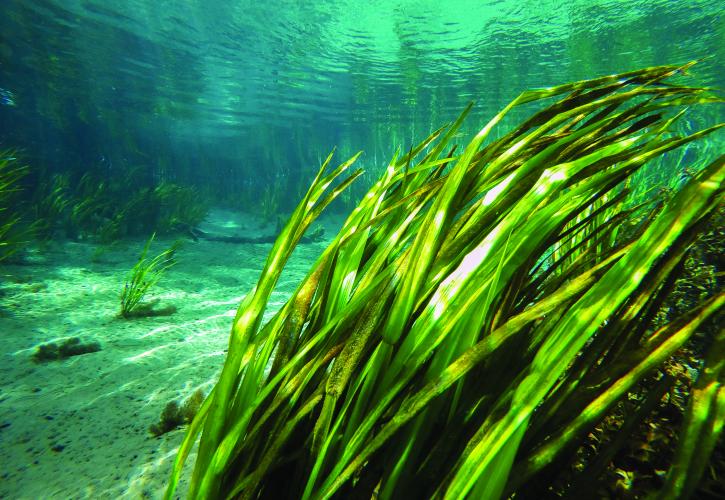Florida has a lot of water. There’s the tremendous amount of rain, 1,350 miles of coastline and beachfront, bays, bayous, creeks, rivers, lakes, and streams. But one of the unique water aspects in the state is our springs. Over 700 springs dot the Florida landscape. Beautiful and cool, they offer Floridians a nice place to chill out during the hot summer weather. But what are they actually?
How Florida springs are made
Under the ground in spring areas there is limestone. Limestone is made of calcium carbonate, which has a porous and easily degradable chemical structure. When this barrier is breached, it allows the cold groundwater an opening directly to the surface water—hence a spring. It can go the other way too! Some above ground streams actually disappear through the limestone, creating the opposite of a stream, also called a swallet.
Springs get their gorgeous blue and turquoise coloring from the reflection of the sky on a sunny day. That partnered with the backdrop of that pure white sand causes the water to reflect a color that inspired the nickname “The Emerald Coast.” In springs, the white calcium carbonate in limestone breaks down into tiny crystals, mixing with the water and reflecting the vivid shades of blue.
Related: Sulphur Springs, Tampa: A Hidden History
Springs pump 8 billion gallons a day of fresh water into Florida ecosystems. Because they are windows into the underground aquifer, they are extremely vulnerable to pollution. While many springs have been protected for decades, others were seen as places to dump trash and make it “disappear.” Many have been affected by urban stormwater and agricultural pollution, losing their clarity, reducing dissolved oxygen levels, and prompting massive cleanup and buffer protection zones.
A comprehensive guide to Florida springs, research, and statewide protection initiatives can be found at the Florida Department of Environmental Protection’s springs website.
Popular Florida springs
Here are some of the biggest and best springs in Florida:
Silver Springs


Silver Springs was once a major destination for Northerners arriving by steamship. The springs are surrounded by gardens and historic structures. The Silver River allows kayakers to experience a primeval forest wilderness surrounded by some of the state’s best managed sandhills, accessible by trails and dotted with friendly campgrounds.
Rainbow Springs

Ornamental gardens, constructed waterfalls and sloping hills are visible reminders of the springs’ more recent past, when the land was home to a mining operation and a privately owned tourist attraction. It’s common for visitors to take a hike through lush, mossy hammocks and then cool off in the springs
Ichetucknee Springs


Although well-known for its warm weather tubing, the 2,669-acre Ichetucknee Springs State Park is also a wildlife haven, where beaver, otter, gar, softshell turtle, wild turkey, wood duck and limpkin all find a home. The main draw is the park’s eight major crystal-clear springs that join to create the 6-mile Ichetucknee River. The upper portion within the state park is a National Natural Landmark, perhaps the most pristine spring run in the state and best enjoyed by canoe or kayak during the cooler months.
Madison Blue Springs


About 82 feet wide and 25 feet deep, the spring bubbles up into a limestone basin along the west bank of the Withlacoochee River. Scenic woodlands of mixed hardwoods and pines create a picturesque setting for picnicking, paddling and wildlife viewing. Voted the No. 1 swimming hole in the country by USA Today, Madison Blue Spring is a family favorite destination and a fantastic place to spend the day.
Homosassa Springs


When Homosassa Springs was a popular train stop in the early 1900s, passengers could picnic and take a dip in the spring while train cars were being loaded up with cedar, crabs, fish and spring water. On a 1924 visit, Bruce Hoover of Chicago called it “the most beautiful river and springs in the world.”
An astounding number of fresh and saltwater fish still congregate in the natural spring bowl — large jacks, snapper, snook and others. A unique underwater structure, the Underwater Observatory allows visitors to “walk underwater” beneath the spring’s surface to watch the various fish and manatees swim about. Gaze down into the depths of the first-magnitude spring and perhaps catch a glimpse of fish and manatees in their natural habitat.




























